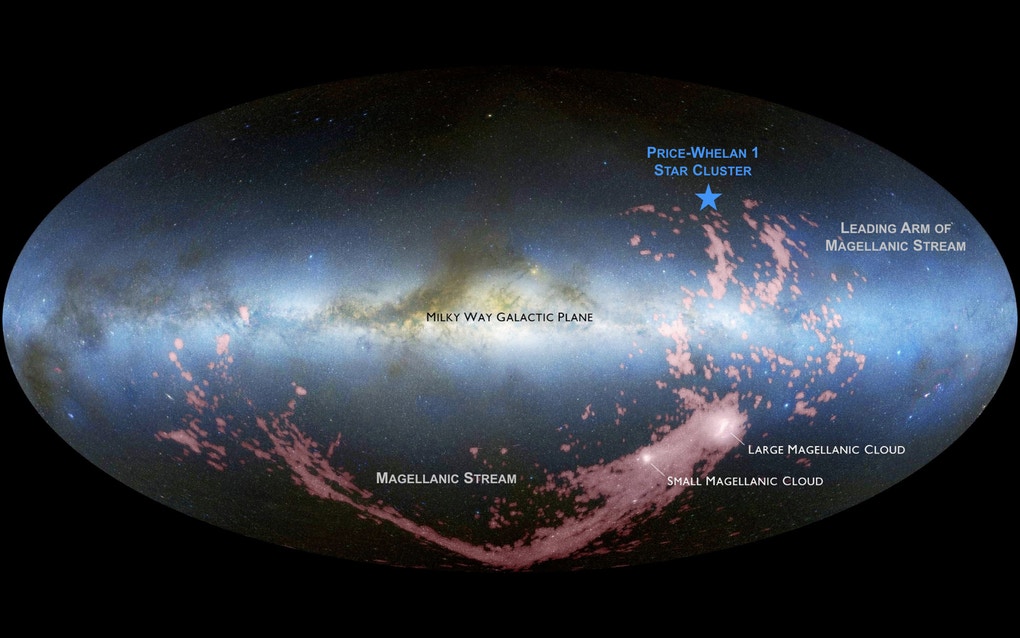
We know that in around 2 billion years’ time, our galaxy will collide with a nearby satellite galaxy, the Large Magellanic Cloud (LMC). This collision will be so dramatic that it will awaken the black hole at the heart of our galaxy, causing it to gorge on nearby matter and balloon to ten times its current size. The LMC is a fairly small galaxy, but it is rich in dark matter so it has a large mass, causing the collision between the two galaxies to be catastrophic.
For now, though, the interaction of the two galaxies isn’t destructive — it is actually creating new stars. Using data from the Gaia spacecraft, researchers looked for rare blue stars and the clusters of stars that move along with them in our galaxy. Once they had identified and removed known star clusters, they found one remaining cluster on the far edges of the Milky Way.
“It’s really, really far away,” primary discoverer Adrian Price-Whelan, a research fellow at the Flatiron Institute’s Center for Computational Astrophysics in New York City, said in a statement. “It’s further than any known young stars in the Milky Way, which are typically in the disk. So right away, I was like, ‘Holy smokes, what is this?’”
By analyzing the elements found in the stars in the cluster, the researchers realized that they were likely formed from particles from outside of our galaxy. As the mystery cluster is located near to a river of gas called the Magellanic Stream which flows from the Large and Small Magellanic Clouds and reaches toward the Milky Way, they believe these other galaxies are the source of the materials which formed the stars.
“This is a puny cluster of stars — less than a few thousand in total — but it has big implications beyond its local area of the Milky Way,” Price-Whelan said. One implication is that the LMC might be closer to the Milky Way than previously believed.
“If the Magellanic Stream is closer, especially the leading arm closest to our galaxy, then it’s likely to be incorporated into the Milky Way sooner than the current model predicts,” David Nidever, assistant professor of physics at Montana State University in Bozeman, said in the statement. “Eventually, that gas will turn into new stars in the Milky Way’s disk. Right now, our galaxy is using up gas faster than its being replenished. This extra gas coming in will help us replenish that reservoir and make sure that our galaxy continues to thrive and form new stars.”
Editors' Recommendations
- Marvel at the beauty of our galaxy with most detailed map of Milky Way to date
- See massive stars being born in a corner of the Tarantula Nebula
- Astronomers spot a cosmic ‘candy cane’ in the center of the Milky Way
- Galaxies’ spiral arms are formed in sync with their magnetic fields
- Hypervelocity star booted out of our galaxy by supermassive black hole




